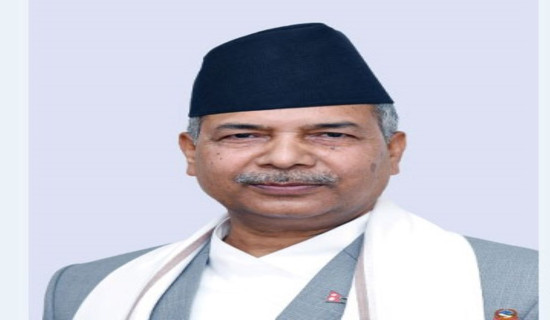- Thursday, 15 January 2026
Daunting Challenge Of TB Treatment
Tuberculosis (TB) has plagued humanity for centuries, causing immense suffering and claiming countless lives. Medical science has answer for this disease, however, TB remains a formidable global health challenge. The complexity and difficulty in treating TB have hampered efforts to control and eradicate this deadly disease. TB is a serious infectious disease that affects millions of people worldwide. It is caused by a bacterium called Mycobacterium tuberculosis and primarily affects the lungs, although it can also affect other parts of the body. TB is spread through the air when an infected person coughs or sneezes, and it can be deadly if left untreated.
Despite being a curable disease, TB remains a major global health problem. According to the World Health Organization (WHO), there were an estimated 10 million cases of TB worldwide in 2019, with 1.4 million deaths. TB is particularly prevalent in low- and middle-income countries, where poverty, malnutrition, and poor living conditions contribute to its spread.
Furthermore, TB is a leading cause of death among people living with HIV/AIDS, as their weakened immune systems make them more susceptible to the infection. Several factors contribute to the transmission and development of TB. Close contact with an infected individual, particularly in crowded settings such as prisons or homeless shelters, increases the risk of transmission. Additionally, factors such as smoking, alcohol abuse, malnutrition, and underlying health conditions like diabetes or lung diseases weaken the immune system, making individuals more susceptible to TB infection. Socioeconomic factors, including poverty, inadequate housing, and limited access to healthcare, also play a significant role in the spread of TB.
TB Free Initiative
Despite significant progress in TB control efforts, several challenges persist. One major obstacle is the emergence of drug-resistant strains of TB, such as multidrug-resistant TB (MDR-TB) and extensively drug-resistant TB (XDR-TB). These strains are more difficult to treat, requiring longer and more expensive treatment regimens. Limited access to diagnostic tools and effective medications in resource-limited settings further complicates the management of TB.
Another challenge is the stigma associated with TB, which often leads to delayed diagnosis and treatment. Fear of discrimination and social isolation discourages individuals from seeking medical help, contributing to the spread of the disease. Addressing this stigma and raising awareness about TB is crucial to ensure early detection and treatment. Furthermore, the global COVID-19 pandemic has posed additional challenges to TB control efforts. The diversion of healthcare resources and disruptions in TB services have resulted in missed diagnoses, treatment interruptions, and increased mortality rates.
In response to this global health crisis, the WHO launched the TB Free Initiative in 2014. The initiative aims to accelerate progress towards the elimination of TB by 2035. The initiative focuses on three key areas: prevention, diagnosis, and treatment. It aims to increase access to TB prevention and treatment services, improve the quality of care, and promote research and innovation.
Prevention is a critical component of the TB Free Initiative. The WHO recommends a combination of strategies to prevent TB, including vaccination, infection control measures, and screening and treatment of latent TB infection. The initiative aims to increase access to the Bacille Calmette-Guérin (BCG) vaccine, which is the only vaccine currently available to prevent TB. The initiative also promotes infection control measures, such as improving ventilation in healthcare facilities and reducing overcrowding in prisons and other high-risk settings.
Diagnosis is another critical component of the TB Free Initiative. Early diagnosis and treatment are essential to prevent the spread of TB and reduce the risk of complications. The initiative aims to increase access to rapid and accurate diagnostic tests, such as the GeneXpert test, which can detect TB and drug-resistant TB within two hours. The initiative also promotes the use of digital technologies, such as mobile phone apps, to improve the accuracy and speed of TB diagnosis.
Treatment is the final component of the TB Free Initiative. The WHO recommends a standard six-month course of antibiotics to treat TB. However, treatment can be complicated by drug resistance, co-infection with HIV, and other factors. The initiative aims to increase access to high-quality TB treatment services, including drug-resistant TB treatment. The initiative also promotes research and innovation to develop new TB drugs and treatment regimens. The TB Free Initiative has made significant progress towards its goal of eliminating TB.
Concerted effort
According to the WHO, the global TB incidence rate has fallen by an average of 1.5 per cent per year since 2000. However, progress has been slow, and TB remains a major public health concern. The COVID-19 pandemic has also had a significant impact on TB prevention, diagnosis, and treatment, with many countries reporting disruptions to TB services. To combat TB, there needs to be a concerted effort from governments, healthcare providers, and the wider community. This includes investing in research to develop new treatments and vaccines, improving access to healthcare services, and addressing the social and economic factors that contribute to the spread of the disease.
In addition, there needs to be greater awareness and understanding of TB among the general public. Many people still associate TB with the past and are unaware of the current global burden of the disease. This lack of awareness can lead to stigma and discrimination against those affected by TB, which can further hinder efforts to control its spread. In conclusion, TB is a serious global health problem that requires urgent action. By working together, we can prevent the spread of TB, improve access to treatment, and ultimately save lives.
(Dr. Lohani is the executive director at Health Concern. lohanis@gmail.com)
















